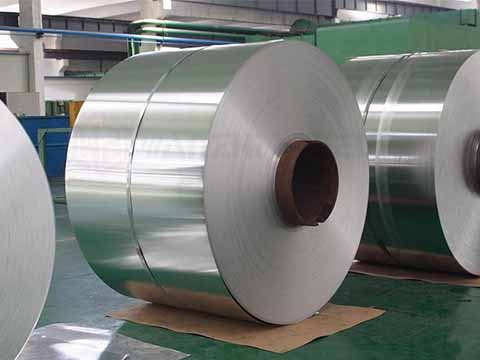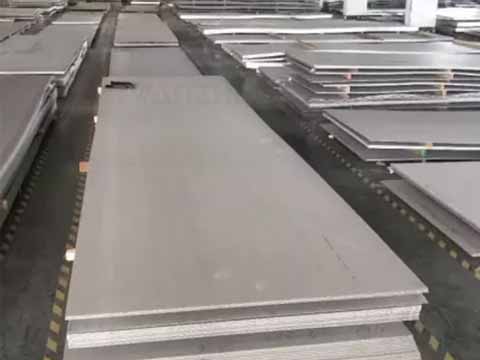Stainless Steel Grades
Stainless steel is the abbreviation of stainless steel, with stainless steel and corrosion resistance as the main characteristics, and the chromium content is at least 10.5%, and the carbon content is not more than 1.2%. The hardness of stainless steel is higher than that of aluminum alloy, and the cost of stainless steel is higher than that of aluminum alloy. The sulfur content of stainless steel shall not exceed 0.05%; The phosphorus content in general steel is limited to less than 0.0%. Therefore, sulfur and phosphorus content is a very important indicator, sulfur, and phosphorus content is not more than 0.04% steel, called high-quality steel; Sulfur content does not exceed 0.03%, and phosphorus content does not exceed 0.035% steel is called high-grade high-quality steel; Steel with sulfur and phosphorus content not exceeding 0.025% is called super quality steel.

Stainless Steel Coil

Stainless Steel Sheet
The sulfur and phosphorus content of common stainless steel is as follows:
| Grade |
Carbon content(%) |
Phosphorus content(%) |
Sulfur content(%) |
| 201 |
<0.15 |
<0.06 |
<0.03 |
| 202 |
<0.15 |
<0.06 |
<0.03 |
| 302 |
<0.15 |
<0.015 |
<0.03 |
| 303 |
<0.15 |
<0.2 |
>0.15 |
| 304 |
<0.07 |
<0.035 |
<0.03 |
| 304L |
<0.03 |
<0.035 |
<0.03 |
| 309S |
<0.08 |
<0.045 |
<0.03 |
| 310S |
<0.08 |
<0.045 |
<0.03 |
| 316 |
<0.08 |
<0.035 |
<0.03 |
| 316N |
<0.08 |
<0.035 |
<0.03 |
| 316L |
<0.03 |
<0.035 |
<0.035 |
| 405 |
<0.08 |
<0.04 |
<0.03 |
| 430 |
<0.12 |
<0.035 |
<0.03 |
| 430F |
<0.012 |
<0.06 |
>0.15 |
| 403 |
<0.15 |
<0.04 |
<0.03 |
| 410S |
<0.08 |
<0.035 |
<0.03 |
| 410 |
<0.15 |
<0.035 |
<0.03 |
| 420 |
0.16-0.25 |
<0.035 |
<0.03 |
| 430 |
0.26-0.35 |
<0.035 |
<0.03 |
Common Stainless Steel Grades
Commonly used stainless steel grades use numerical symbols, there are 200 series, 300 series, and 400 series, they are the United States expression methods, such as 201,202,302,303,304,316,410,420,430, etc., Chinese stainless steel grades are represented by elements symbols plus numbers, such as 1Cr18Ni9, 0Cr18Ni9, 00Cr18Ni9, 1Cr17, 3Cr13, 1Cr17Mn6Ni5N, etc., the number indicates the corresponding element content.
- 200 series: Chromium-nickel-manganese austenitic stainless steel
- 300 Series: Chromium-nickel austenitic stainless steel
- 301: Good flexibility, used for molding products. It can also be hardened by machine speed. Good weldability. The wear resistance and fatigue strength are better than 304 stainless steel.
- 302: Corrosion resistance is the same as 304, and the strength is better because the carbon content is relatively high.
- 302B: It is stainless steel with high silicon content and high resistance to high-temperature oxidation. 3
- 303: By adding a small amount of sulfur, and phosphorus to make it more cutting processing.
- 303Se: Also used for making parts that require hot upsetting, because under such conditions, this stainless steel has good hot workability.
- 304:18/8 stainless steel. The GB brand is 0Cr18Ni9.
- 304L: It is a variant of 304 stainless steel with lower carbon content and is used for occasions where welding is required. The lower carbon content minimizes the carbides precipitated in the heat-affected zone near the weld, which can lead to intergranular corrosion (welding erosion) in stainless steel in some environments.
- 304N: is nitrogen-containing stainless steel, nitrogen is added to improve the strength of the steel.
- 305 and 384: containing high nickel, its work hardening rate is low, suitable for a variety of occasions with high requirements for cold formability.
- 308: Used for making welding rods.
- 309, 310, 314, and 330: Nickel and chromium content are relatively high, in order to improve the oxidation resistance and creep strength of steel at high temperatures. The 30S5 and 310S are variants of 309 and 310 stainless steel, the difference is that the carbon content is lower, in order to minimize the carbide precipitated near the weld. 330 stainless steel has particularly high carburization resistance and thermal shock resistance.
- 316 and 317: contain aluminum, so the resistance to point corrosion in Marine and chemical industry environments is much better than 304 stainless steel. Among them, type 316 stainless steel consists of low-carbon stainless steel 316L, nitrogenous high-strength stainless steel 316N, and free-cutting stainless steel 316F with high sulfur content.
Learn more about 316 series stainless steel:What Is Difference Between SS316 and SS316L?
- 321, 347, and 348: are titanium, niobium plus tantalum, and niobium stabilized stainless steel, suitable for use at high-temperature welding components. 348 is a stainless steel suitable for the nuclear power industry, which has a certain limit on the amount of tantalum and drill.
- 400 Series: Ferritic and martensitic stainless steel
- 408: Good heat resistance, weak corrosion resistance, 11% Cr, 8% Ni
- 409: the cheapest model (British and American), usually used as an automobile exhaust pipe, ferritic stainless steel (chromium steel)
- 410: Martensite (high-strength chromium steel), good wear resistance, poor corrosion resistance.
- 416: The addition of sulfur improves the processing performance of the material.
- 420: “cutting tool grade” martensitic steel, similar to Brinell high chromium steel this earliest stainless steel. Also used in surgical knives, can be made very bright
- 430: Ferritic stainless steel, used for decoration, such as car accessories. Good formability, but poor temperature resistance and corrosion resistance
More stainless steel knowledge: What Is Stainless Steel?








